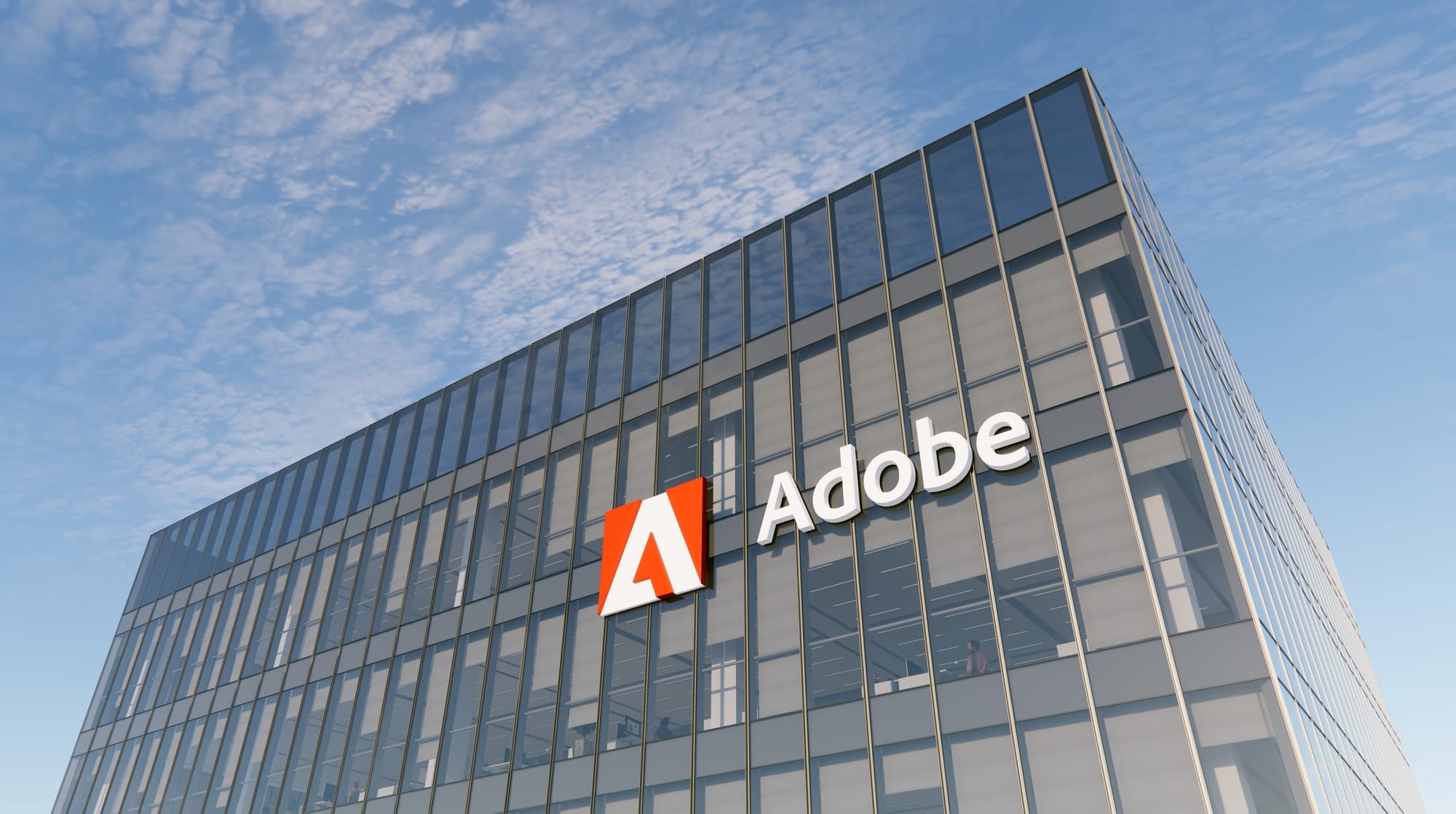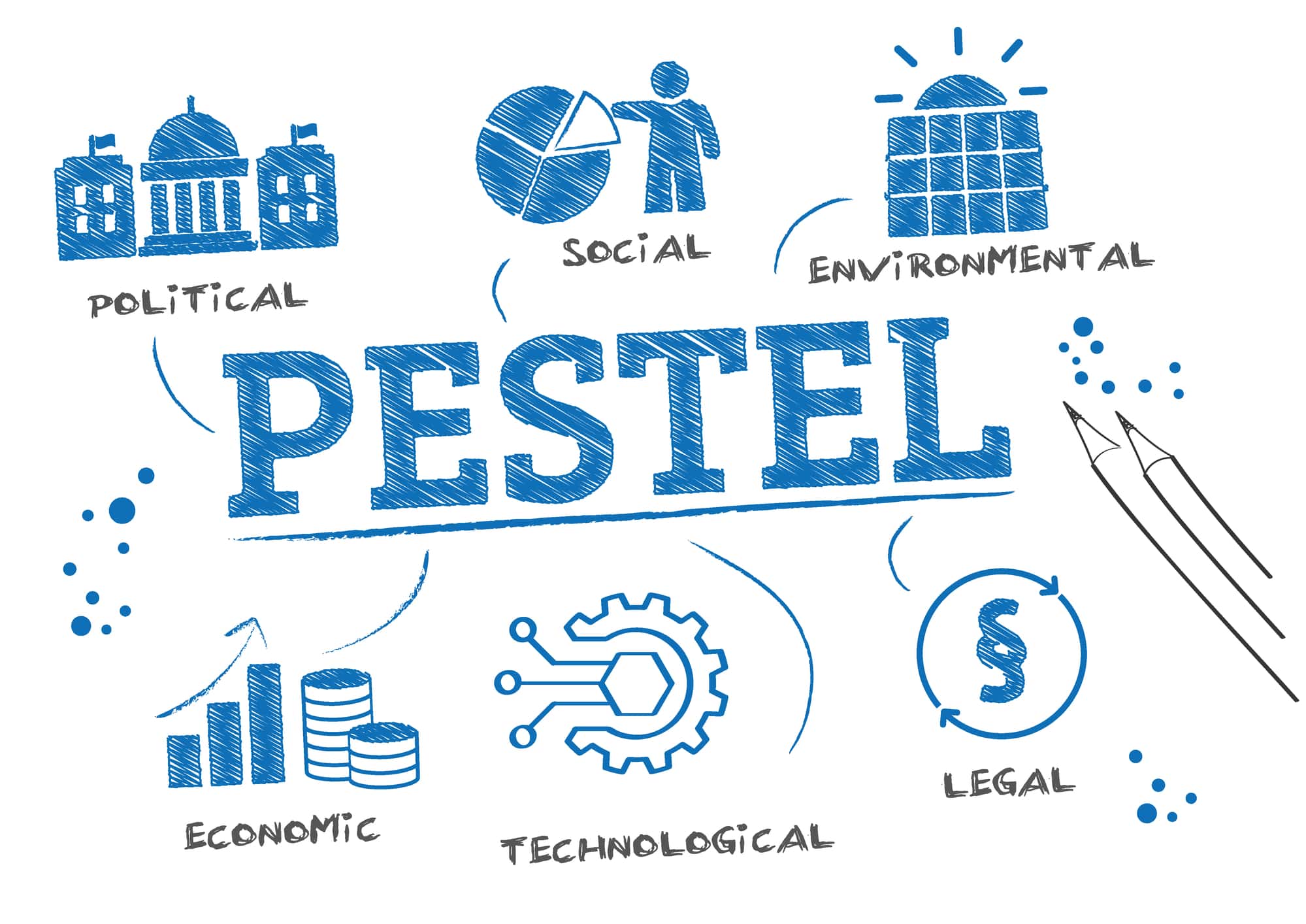Gain in-depth insights into Adobe's competitive edge with a comprehensive Adobe PESTLE analysis, unraveling strategic success factors.
What is that one software company that offers software for video editing, picture editing, graphic designing, document reading, and many other purposes? It is Adobe.
Adobe is one of the biggest software companies with software in the market for almost everything. The software company offers almost 100 desktop, mobile, and web software.
This software simplifies complex tasks, and we all use it daily. You must be thinking, why are we discussing Adobe today? Well, earlier, we conducted the SWOT analysis of Adobe.
However, in today's article, we will conduct the Adobe PESTLE analysis to see how different external factors impact the operations of Adobe. Before we proceed further, let's take a look at the history of Adobe.

Two ex-employees of Xeroc PARC laid the foundations of Adobe. The company was established in California in 1982. Soon after its formation, Adobe launched the first version of PostScript.
PostScript took the market by storm, making printing complex graphics and fonts on laser printers possible. Adobe became quite popular in no time; the software company managed to grab a significant market share just in a few years.
In 1987, the software company introduced Adobe Illustrator. This software was one of the first graphic design software to use vector graphics.
Graphic designers across the globe bought Adobe Illustrator. As a result, the company generated a lot of revenue from the launch of this software.
In 1988, Adobe made a big move by acquiring software originally made by Thomas and John Knoll. Adobe marketed this software with the name of Adobe Photoshop.
Like the previous software of Adobe, the launch of Adobe Photoshop drew a lot of attention since it was a user-friendly picture editing tool.
A few years down the line, Adobe again came up with software that was loved by millions of people across the globe. In 1993, Adobe launched software that allowed document creation, sharing, and viewing. This software was called Adobe Acrobat.
People who used computers loved the user-friendly software of Adobe. After looking at the response of users, Adobe decided to launch an Adobe Creative Suit in 2003. The Adobe Creative Suit has a collection of different software for creative professionals.
As the internet penetrated rapidly in the coming years, Adobe transitioned to a subscription-based model. Adobe launched Creative Cloud in 2013. It provided an opportunity for the users to access software of Adobe through annual or monthly subscriptions.
Currently, more than 26 million people have subscribed to Creative Cloud. After that, Adobe also started developing mobile Apps once smartphones were readily available to the masses.
In 2015, the software company launched Adobe Stock. This software provided access to users of stock assets. Over the years, Adobe acquired companies to increase its market share.
The company made several acquisitions, due to which the brand's customer base increased. As a result, the profits also increased. Currently, Adobe is considered one of the best software companies.
In 2023, Adobe managed to generate revenue of $18.4 billion. Besides that, the software company also provides employment to 29,239 people.
Now that we have discussed the history and current operations of Adobe in detail let's discuss what PESTLE analysis is. PESTLE analysis is a tool businesses use to analyze what external factors impact a business.
A PEST analysis highlights how different political, social, environmental, legal, economic, and technological factors impact the operations of a business.
Now that we have discussed what a PESTLE analysis is let's proceed further and discuss how different political factors impact the operations of Adobe.
Political Factors That Affect Adobe
Political factors are the factors that are associated with the political environment domestically and globally. Political factors also take government policies into account. In this section, we will discuss how different political factors impact Adobe.
The global political landscape affects the operations of Adobe significantly. For example, due to the current conflict between Russia and Ukraine, Adobe shut down its sales in Russia.
This decision will hurt Adobe financially since the software company has a huge market in Russia. Hence, political tensions hurt Adobe. Moreover, government policies also have a significant impact on the operations of Adobe.
If the government supports software companies through tax-reliefs and subsidies, it would benefit Adobe since it would generate more profit.
On the contrary, if the government starts imposing heavy tax rates on the software companies, the profits of Adobe will fall, and the software company will suffer financially.
Furthermore, trade barriers can impact Adobe significantly. Adobe is a big software company that requires machines and advanced equipment worldwide.
However, suppose the government imposes bans on the imports of machines and equipment that Adobe requires. In that case, the operations of Adobe will be affected significantly.

Economic Factors That Affect Adobe
Economic factors are the factors that are related to global and domestic economic conditions. In this section, we will take a look at and discuss how different economic factors impact the operations of Adobe.
Inflation is an important macroeconomic variable that has a significant impact on Adobe. When the inflation rate is high in an economy, the prices of commodities rise. In that case, individuals prefer to restrict their consumption and prefer to buy necessary products only.
As a result, in an economy experiencing high inflation levels, the demand for the software falls since people prefer buying pirated software because they are cheap.
Moreover, interest rates impact the operations of Adobe significantly. If the interest rates are high in an economy, the cost of borrowing increases, due to which businesses avoid taking loans from the banks.
High interest rates don't suit Adobe since when the interest rate is high, Adobe avoids taking loans from the banks because of high borrowing costs. As a result, in periods of high interest rates, Adobe cannot expand its operations by taking bank loans.
Fluctuating exchange rates also affect the sales of Adobe. As the exchange rates of countries fluctuate with respect to the US dollar, the software of Adobe gets expensive. Hence, the demand for Adobe varies due to the exchange rate fluctuations.

Social Factors That Affect Adobe
Social factors are the factors that are linked to the society and the culture. In this section of the PESTLE analysis, we will discuss how different social factors impact the operations of Adobe.
Demographics of a society impact the sales of Adobe significantly. Adobe mainly generates revenue by selling software. This software often targets young, tech-savvy people.
Suppose a majority of the population of a society is elderly. In that case, the demand for Adobe's products will be low in such a society compared to a society where a majority of the people are young and tech-savvy.
Moreover, the aptitude of the people in society really impacts the sales of Adobe. There are some societies where people are very tech-savvy, and they are interested in learning soft skills that can help them earn through freelancing.
In such societies, the demand for the software of Adobe will be high. On the other hand, in societies where people are not interested in learning soft skills, the demand for the software will be low.
Other than that, the literacy rate in a society impacts the operations of Adobe significantly. Suppose a society has a high literacy rate.
In that case, more people will be able to use computers, so the demand for Adobe products in such a society may be high. On the contrary, product demand will be low in a society with a low literacy rate.

Technological Factors That Affect Adobe
Technological factors are the factors that are associated with technological innovation. Let's take a look at how different technological factors impact Adobe.
Access to computers has a significant impact on Adobe. Adobe is famous for making software for computers. Initially, when Adobe was formed, fewer people across the globe had computers.
Due to this, the demand for Adobe's software was less. As technological developments took place, more people got access to computers. Hence, the demand for the software of Adobe increased.
As Artificial Iintelligence emerged, Adobe started using AI in its software to enhance the user experience. For example, a few Adobe software provides an option for image recognition with the help of AI.
Besides that, Adobe can use AI for customer service and other purposes. By doing so, the workforce of Adobe will shrink, and the operational costs of the company will fall.
Moreover, tools for data analysis have emerged due to the technological innovations. Adobe can use these data analytics tools to forecast its sales in the coming months.
Moreover, with the help of data analytics tools, Adobe can identify its potential customer base. The software company can then plan its products accordingly.

Legal Factors That Affect Adobe
Legal factors are the laws that are present in a country. In this section, we will discuss how a country's legal framework impacts Adobe.
More than 26 million people have subscribed to Adobe's Creative Cloud. Adobe has to make sure that it keeps the private information of these clients secret. If their information gets leaked, Adobe will have to pay heavy fines for violating data privacy laws.
Moreover, Adobe must ensure that all its workforce is treated equally regardless of color, ethnicity, gender, and religion. Adobe also has to pay at least minimum wages to its employees. Otherwise, the software company will face lawsuits for not following the labor laws.
Besides that, the copyright and patent laws protect Adobe since after these laws, no other company can copy the software of Adobe. Furthermore, piracy laws discourage people from buying pirated copies of Adobe's software, which benefits Adobe.
Although Adobe is currently one of the biggest software companies in the world, the company still has to comply with contractual laws, or it will face lawsuits. Adobe might have to pay heavy fines if it doesn't comply with the contractual laws.
Environmental Factors That Affect Adobe
Environmental factors are associated with the environment. In this section of the PESTLE analysis, we will take a look at how different environmental factors impact the operations of Adobe.
Adobe develops software installed on computers, smartphones, and other devices. All these devices require electricity, so environmentalists blame Adobe for increasing electricity consumption and causing increased carbon emissions.
Adobe has to take some steps to change its reputation from non-eco-friendly to eco-friendly. Otherwise, people may start disliking the company.
Moreover, the headquarters of Adobe requires a lot of electricity to operate. The software company should take and use renewable energy. By doing so, air pollution will be reduced, and the goodwill of Adobe will increase.
Adobe, a leading software company, is responsible for spreading awareness of reducing E-waste. It should promote the recycling of E-waste. This will improve the reputation of Adobe and may increase its sales.
Additionally, Adobe's headquarters requires a constant internet supply to interact with clients. In case the supply of internet gets disrupted due to natural disasters, the operations of Adobe will be affected.

Adobe PESTLE Analysis: Final Word
Adobe is a US-based software company established in 1982 by two ex-employees of Xeroc PARC. Adobe soon launched its first product, the first version of PostScript.
PostScript shook the entire market. Before PostScript, no software could print complex graphics and fonts on laser printers. People across the globe loved it and waited for Adobe to launch more software.
In the coming years, Adobe launched more software. All the software launched by Adobe were user-friendly and very effective, which is why people loved them.
Later, Adobe made a platform where people could access its software by taking its subscription. Currently, Adobe is a multi-billion company. It also provides employment to thousands of people.
In today's article, we conducted the PESTLE analysis of Adobe. The PESTLE analysis framework helped us identify the political, social, economic, legal, technological, and environmental factors that impact Adobe.
If you enjoyed reading this PESTLE analysis and want to know more about what a PESTLE analysis is, do look at more examples here.


